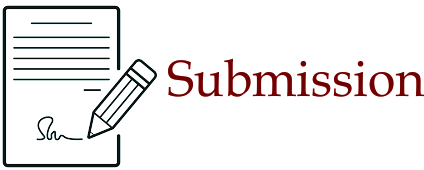General:
1. Put a mark on the wrong part or part that needs to be changed.
2. Put a mark on the right side of the line or the wrong line that needs to be changed.
Details:
1. Title: Effectiveness, Specifications, and clarity.
2. Abstract: Complete and describe the essence of the article.
3. Keywords: Describe important concepts of the article.
4. Introduction: Up-to-date, originality, the relevance of topics, compatibility of important reasons of research objects.
5. Research Methods: Should emphasize procedures and data analysis for empirical studies.
6. Results: Accuracy analysis.
7. Findings: Recent findings, relevance to interrelated researchers, and the contribution of scientific contributions from findings/ideas to the development of science.
8. Conclusion: Logical, valid, concise, and clear.
9. Suggestion: For practical action, the development of new theories, and further/further research.
10. Pictures / Tables: Centrally located, Not cropped, Good quality to see, image/title of the table, referenced in capital letters
11. Bibliography: The latest degrees and references to the main book sources and journals or scientific researchers . Rules: minimum 80% of journals or scientific researchers; reference issues maximum of the past 10 years; minimum number of sources 20.
Complete Manuscript Review Process:
1. Writing: Is the script easy to follow, that is, has a clear logical and organizational development?
2. Is the script concise and easy to understand? Every part that has to be reduced,
3. Removed / expanded / added?
4. Pay attention if there are major problems with mechanics: grammar, punctuation, spelling. (If there are only a few places that aren't properly spoken or correct, make a note to tell the author of certain places. If there are consistent problems throughout, only select one or two examples if necessary - don't try and edit them all).
5. Abbreviations: Used wisely and arranged so that the reader will have no trouble remembering what the abbreviations represent.
6. Follow the style, format, and other journal rules.
7. Quotations are provided when providing evidence-based information from outside sources.
Decision Category:
Publish: No Need for Revision
Minor: Revisions can be made by the Editor-In-Chief or those who help
Major: Revisions can only be made by the author
Rejected: Not scientific or too much



















